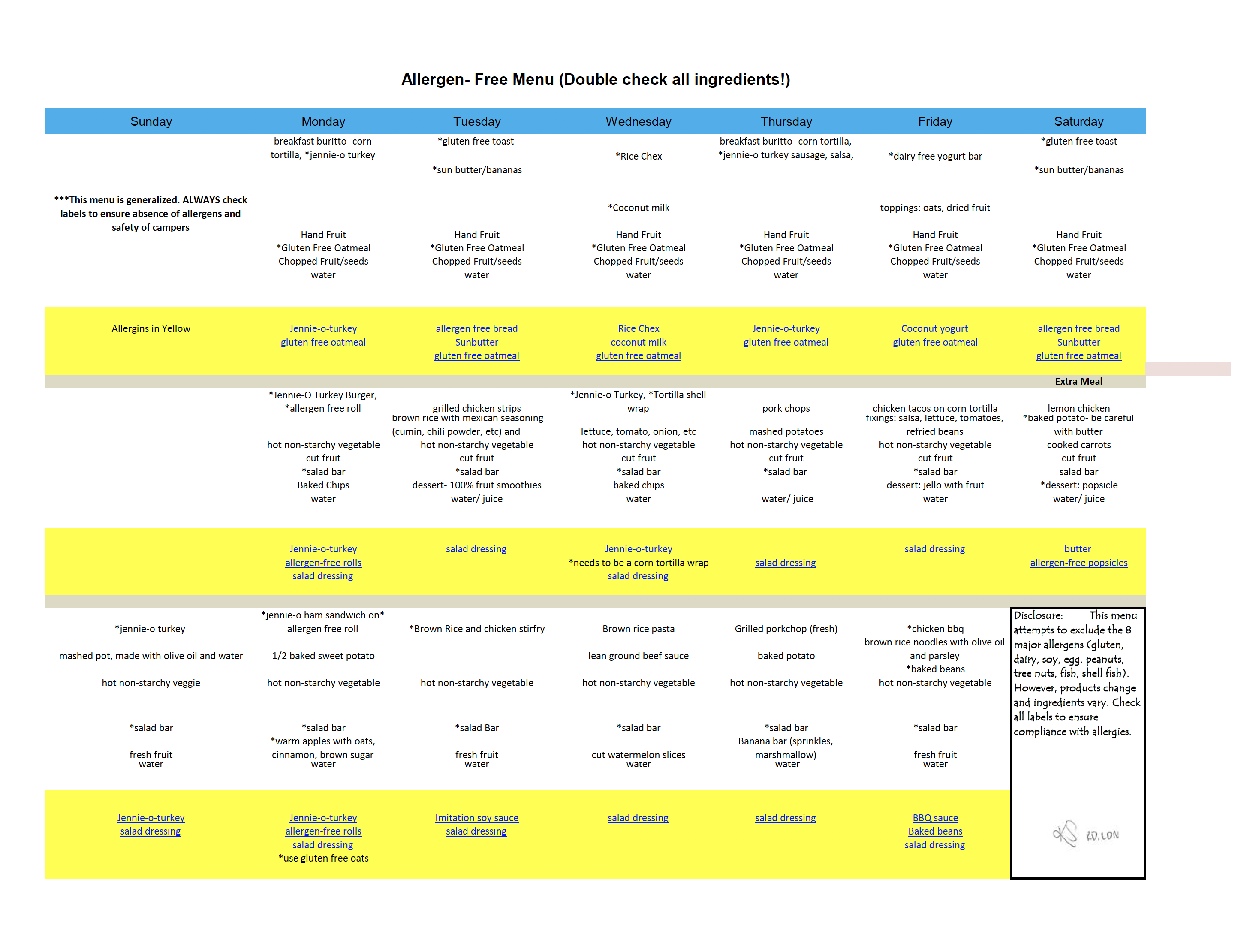Dining Hall Modifications
-
Healthy Dining Hall Modifications
-
New Menu Updates
-
Active Scout Serving Sizes
-
Request a Signed Camp Menu
Better dining hall ratings and less waste!
-
What to Expect
Better dining hall ratings and less waste!
The purpose of menu standards is to give camps flexibility in continuing to offer camp favorite recipes, in moderation. If the tray can only have one starch choice and one protein choice, the rest of the tray will be filled with fruit and vegetables. This creates a nutrient-rich tray. It’s also important to offer veggie options at each meal. Menus must meet the National Camp Standards for Food Planning and are approved by a PRO Wellness Registered Dietitian.
-
Minimum Requirements for Registered Dietitian Signed Menus
The Penn State PRO Wellness Registered Dietitian is available to sign off on camp menus that meet the standards below. Camps in need of recommendations for meals, food management contracts/companies, or menu items are encouraged to contact the staff at PRO Wellness.
- 50% of grains offered should be whole grain.
- This does not mean offer white rice and brown rice, which will likely result in a large waste. Instead, offer brown rice with regular pizza or whole-grain bread with regular biscuits.
- PRO Wellness will look at the entire menu to calculate 50%, not individual meals.
- Each meal should feature a protein and a healthy carbohydrate (whole grain, fruit, starchy vegetable).
- A hot AND cold non-starchy vegetable should be offered at lunch and dinner.
- A salad bar qualifies as cold vegetables.
- Fruit should be offered at least three times per day and cut or fork fruit one time per day.
- i.e. orange slices, apple slices, berries, etc.
- Cut or fork fruit goes well in place of dessert! If you’re worried about scouts accepting it as dessert, feel free to add a little whip cream on top to make it more dessert-like. Also, serving cut or fork FRESH fruit really improves dining hall ratings.
- Sugar-sweetened beverages (such as bug juice) should be offered no more than once per day.
- Absolutely, no fried foods!
- Trying baking or broiling to get meat and potatoes crunchy.
- All dairy products should contain 2% fat or less.
- Dessert should be offered no more than once per day.
- Adhere to minimum serving size requirements.
- Adhere to minimum serving size requirements for Cub Scouts.
- Access a sample special dietary needs form
- Access a sample special dietary needs form
- Access a safe minimum cooking temperature guide
Other Understandings:
- Vegetables and fruit should be offered at the beginning of the service line (if using offer vs. serve style).
- Campers should be allowed to access the salad before the service line (if salad bar is available).
- Healthy signage should be hung throughout dining hall in high traffic areas and at eye level to scouts.
- It should be well known to Scouts that seconds are available, and they should have ample time to consume seconds.
- Monitor food satisfaction via evaluation forms
- Evaluate food cost difference from year to year using dining hall invoices
*Allow second helpings to assure adequate nutrition.
*Make sure campers have enough time to get to second helpings.
*Make sure campers are offered vegetarian protein options: veggie burgers, nut butter spreads, hummus, black beans, etc. - 50% of grains offered should be whole grain.
-
Improving Dining Hall Layout
Unfortunately, changing the menu alone is not enough. Although that does make camp healthier, it does not guarantee campers will eat the food. To ensure success, it is imperative to implement the guidelines below, prior to changing menus.
Playing music in the dining hall can create a fun atmosphere. We recommend playing fun, age appropriate music during meal times to increase energy and create a fun, engaging atmosphere.
Hang posters covered with fruits and veggies to nudge healthier decisions.
- Free Posters from PRO Wellness
- Free Posters from USDA
- Posters targeted at boys for sale:
- Allow campers to go to the salad bar freely before being dismissed for hot food.
- Consider more than one salad bar.
- Allow campers to go down each side of the salad bar to ensure efficiency.
- Consider larger bowls for salads.
- Ensure campers have the same salad bar options that leaders are offered
- Put vegetables in the front of the serving line, followed by fruit, to increase these intakes.
- Serve hot food family-style to improve speed of service.
- Designate waiters from each troop to deliver hot food for the table.
- If family-style service is not utilized, save the largest section of the tray for the salad bar or have separate larger bowls for salad bar.
- If family-style service is not utilized, ensure that the last served has adequate time to eat (minimum of 20 minutes).
- Fill milk coolers with the majority of space taken up by fat-free white milk. Make any flavored milks inconvenient and assure that they take up less cooler space than the low-fat options.
- If flavored milk is served, it should be fat-free.
- Post menus for the week featuring vegetables first. Hang the menus at eye level in multiple areas of the dining room, especially near the food lines.
- Vegan and Allergen Menu


